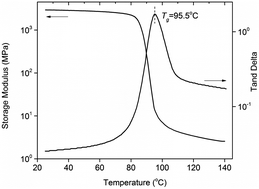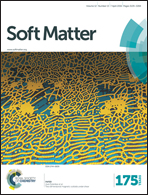Cyclic behaviors of amorphous shape memory polymers†
Abstract
Cyclic loading conditions are commonly encountered in the applications of shape memory polymers (SMPs), where the cyclic characteristics of the materials determine their performance during the service life, such as deformation resistance, shape recovery speed and shape recovery ratio. Recent studies indicate that in addition to the physical damage or some other irreversible softening effects, the viscoelastic nature could also be another possible reason for the degraded cyclic behavior of SMPs. In this paper, we explore in detail the influence of the viscoelastic properties on the cyclic tension and shape memory (SM) behavior of an epoxy based amorphous thermosetting polymer. Cyclic experiments were conducted first, which show that although the epoxy material does not have any visible damage or irreversible softening effect during deformation, it still exhibits obvious degradation in the cyclic tension and SM behaviors. A linear multi-branched model is utilized to assist in the prediction and understanding of the mechanical responses of amorphous SMPs. Parametric studies based on the applied model suggest that the shape memory performance can be improved by adjusting programming and recovery conditions, such as lowering the loading rate, increasing the programming temperature, and reducing the holding time.


 Please wait while we load your content...
Please wait while we load your content...